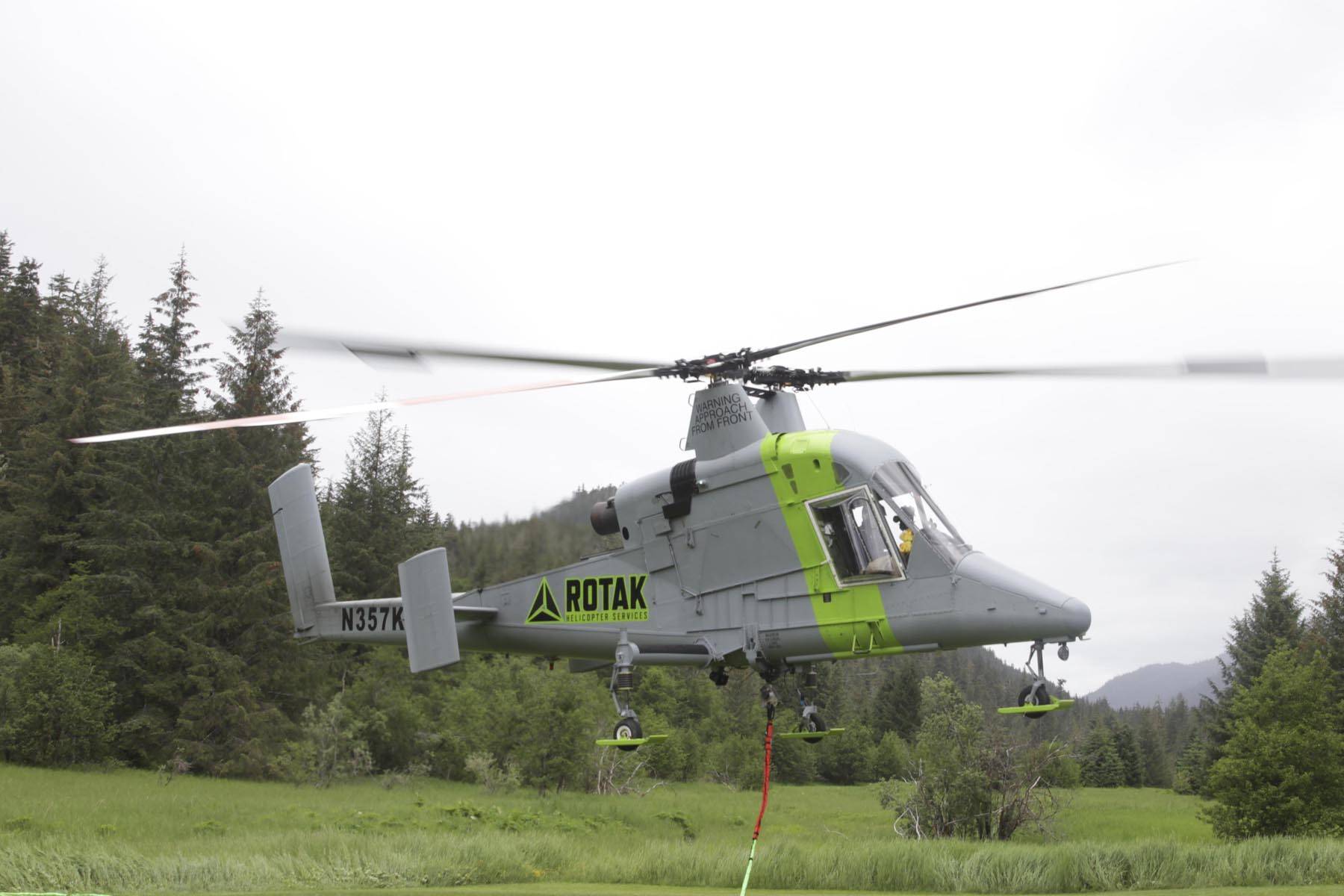When building a trail, there are certain tools you expect to use. Shovels. Axes. Wheelbarrows. Saws.
Helicopters might be one you don’t think of as often. Especially one as odd looking as the K-Max used Tuesday on the new Horse Tram Trail, near Boy Scout Beach and Amalga Harbor.
“It’s one of the few aircraft that can lift its own weight,” said Andy Roget, K-Max maintenance chief with ROTAK Helicopter Services. “They’re good as far as vertical lifting goes because there’s no tail rotor.”
The K-Max has a pair of intermeshing main rotors that counterrotate to generate massive vertical lift. Most helicopters have a tail rotor or other means of counteracting the rotational force of the main rotor, which can take away up to 20 percent of the horsepower that could otherwise be dedicated to vertical lift, Roget said.
The aircraft is small — 5,000 lbs, with room for a single pilot — and not especially fast, Roget said, topping out at around a 100 mph. But it can lift three tons — more than its own empty weight. This is invaluable for the aircraft, which usually serves in rural construction work, firefighting, powerline construction and other heavy lift operations which regular helicopters aren’t geared for.
“One of the selling points is its low maintenance,” Roget said. “The downside is that it’s only a one-seater and it’s not terribly fast.”
[Video: Trail Mix reroutes Treadwell ditch]
The K-Max, introduced in 2001 by Kaman Aircraft, has no hydraulics, cutting down on a lot of maintenance work, Roget said.
The helicopter’s part, slingloading one ton bags of gravel out to the muddy scar of the future trail, should be finished Tuesday, with an option for further work on Wednesday, said Trail Mix Inc. executive director Ryan O’Shaughnessy. Once the gravel bags are in place, a group of about 12 Trail Mix crew and volunteers will spread the gravel out along the path of the trail.
“It’s moving pretty quick,” O’Shaughnessy said. “I hope it’ll be ready to hike by the end of July.”
While Trail Mix usually works with local helicopter companies to assist with slingloading materials into rural parts of the borough for trail work, the opportunity to work with ROTAK and its more capable helicopters was too economical an opportunity to pass up, O’Shaughnessy said.
“Their hourly rate is higher but they work a lot faster,” O’Shaughnessy said.
The choice to work with ROTAK for the slingloading operations cost roughly $37,000, O’Shaughnessy said, less than half of what it might cost with a less capable airframe.
The Horse Tram Trail project began in 2017, though mostly involved planning and permitting until the clearing of vegetation from the trail last year, O’Shaughnessy said.
• Contact reporter Michael S. Lockett at 757.621.1197 or mlockett@juneauempire.com.

